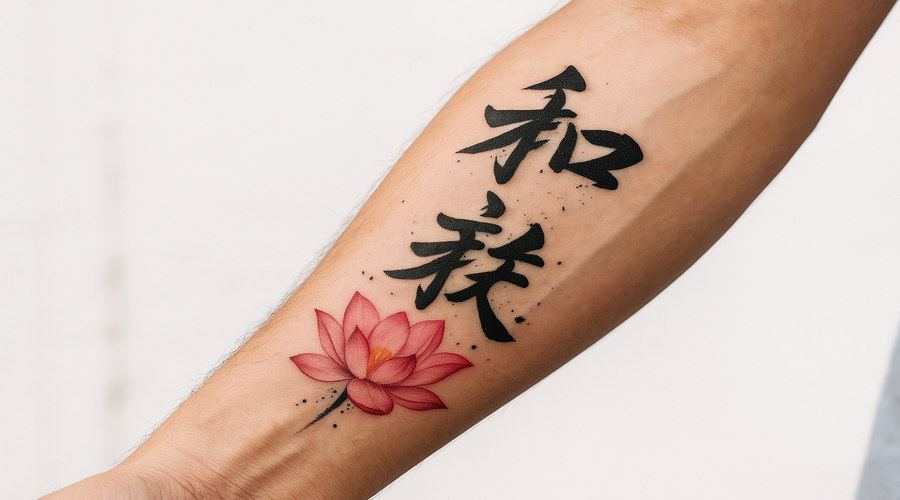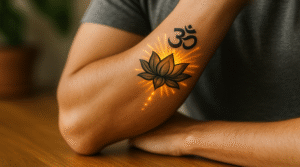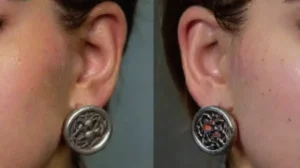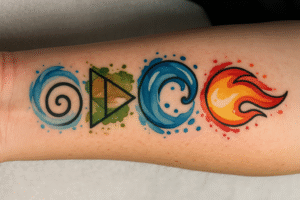Asian-inspired tattoos are renowned for their rich symbolism and intricate design elements. They often incorporate traditional motifs that carry deep cultural meanings and stories. For many, these tattoos serve as a form of personal expression, honoring heritage or spiritual beliefs.
Among these motifs, mandarins and various symbolic images hold a special place. They are not only visually striking but also embody principles such as prosperity, good fortune, and longevity. Understanding these symbols enhances appreciation for the artistry and significance behind such tattoos.
The Significance of Mandarins
Mandarins are more than just a sweet fruit in many Asian cultures; they symbolize wealth and prosperity. Their vibrant color and rounded shape are associated with completeness and abundance, making them popular in traditional art and tattoos.
Historically, mandarins have been linked to good luck and the wish for a prosperous future. In Chinese culture, they are often gifted during festivals as a sign of respect and blessing. As tattoo motifs, they serve as reminders of these positive aspirations.
Furthermore, mandarins represent harmony and community. Their presence in a tattoo can suggest a desire for balance in life or a connection to one’s cultural roots. Many also see them as symbols of happiness and success, making them popular choices for personal embellishment.
Symbols of Longevity and Wisdom
In Asian tattoo art, images like dragons, cranes, and peach blossoms frequently symbolize longevity and wisdom. These symbols are believed to invoke long life and good health for the wearer.
Dragons, for example, are majestic creatures that protect and bring strength. They are often depicted in flowing forms that symbolize power and wisdom passed down through generations. Their presence in tattoos can reflect personal resilience or aspiration for spiritual growth.
Similarly, cranes are revered as symbols of eternal life and fidelity. Their elegant flight and delicate appearance make them ideal for conveying grace, peace, and wisdom. Many choose these images to honor elders or to seek guidance in life’s journey.
Peach blossoms are also associated with immortality and vitality in Asian mythologies. Their seasonal blossoming signifies renewal and hope. As tattoo symbols, they often serve as reminders of resilience and the pursuit of a long, meaningful life.
Mythical Creatures and Guardians
Mythical creatures like dragons, phoenixes, and qilins frequently appear in Asian-inspired tattoos. These figures are believed to offer protection and convey powerful virtues.
The dragon, a symbol of strength and good fortune, is often shown as a benevolent creature that wards off evil spirits. Its vibrant, flowing form embodies vitality and auspicious energies, making it a popular design among those seeking protection.
The phoenix represents rebirth, renewal, and perseverance. Its fiery rebirth from ashes symbolizes overcoming challenges and emerging stronger. Many people incorporate the phoenix into their tattoos as a personal emblem of transformation and hope.
Qilins, sometimes called Chinese unicorns, are protectors against negative influences and bring harmony. Their graceful forms are often depicted amidst clouds or waves, emphasizing their divine and auspicious nature in tattoo art.
Traditional Colors and Styles
Asian tattoo artistry is distinguished by its bold colors and distinctive staging. Common colors like red, black, and gold are used to highlight specific symbols and evoke particular emotions.
Red signifies happiness, good luck, and celebration, frequently used in auspicious designs. Black provides depth and contrast, outlining intricate details and emphasizing the artwork’s precision. Gold adds a touch of luxury and wealth, enhancing the richness of each tattoo.
Styles such as Japanese Irezumi and Chinese brushwork employ traditional techniques that give tattoos a sense of historical authenticity. These styles often feature intricate line work, shading, and symbolic imagery to create compelling visual stories.
Traditional Asian tattoos often follow specific conventions in composition and symbolism, ensuring that each element conveys a meaningful message. The balance of color, form, and symbolism is carefully curated to reflect cultural values and artistic heritage.
Elements of Nature
Nature plays a significant role in Asian tattoo motifs, with flowers, waves, and mountains symbolizing various concepts.
Cherry blossoms, for instance, are emblematic of fleeting beauty and the transient nature of life. Their delicate petals are often depicted in blossom, reminding wearers to cherish each moment. They also symbolize renewal and the cyclical nature of life.
Waves and water symbolize fluidity, strength, and adaptability. In tattoos, they often accompany animals or mythical creatures, creating a dynamic sense of movement. Their presence suggests resilience amid life’s challenges.
Mountains, as symbols of stability and endurance, often feature in landscape tattoos. They represent unwavering strength and the pursuit of lofty aspirations. These elements combine to evoke harmony and balance within the natural world and personal philosophy.
Cultural and Personal Interpretations
While many Asian symbols carry common cultural meanings, their interpretation can vary based on personal experiences and beliefs. Tattoo wearers often choose symbols that resonate with their individual journeys.
For some, depicting mandarins may symbolize success and ambition, while others might see them as a connection to family and tradition. The context within which symbols are presented influences their personal significance.
Understanding the cultural background of each motif allows for a deeper appreciation of the artwork’s intent. It also encourages respectful acknowledgment of the traditions from which these symbols originate, making each tattoo a meaningful expression of identity.
Asian-inspired tattoos are rich with cultural symbolism and artistic tradition, making them a compelling form of personal expression. Mandarins and other motifs encapsulate themes of prosperity, longevity, and protection, resonating deeply with those seeking to embody these qualities.
By exploring the meanings behind these symbols, wearers can forge a meaningful connection to their cultural heritage or personal beliefs. These tattoos become more than just artwork—they are an extension of one’s identity and life philosophy.








